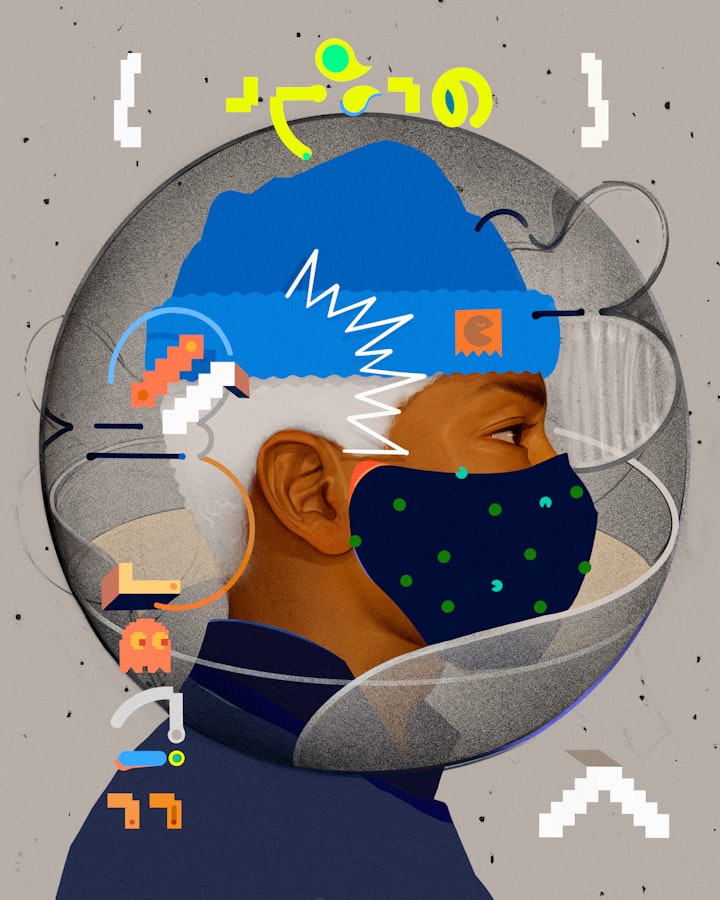Viruses have existed since ancient times.
Viruses are always around us.

What comes to your mind when you hear the word "virus"? Maybe the common cold, the flu sickness, or maybe even a global pandemic, like the one we are experiencing today, caused by a coronavirus that may have come from bats. In fact, viruses are always present in the living world, infecting, affecting and interacting with all organisms, from the very small to the very large, and can be found in every ecosystem on the planet.
They are everywhere and important to our lives such as the air we breathe, the water we drink, and the food we eat. But what exactly is it? Are they still alive? What do they do, and how do they do it?
Small, but Mighty
Viruses are the smallest of all microbes. It takes 500 million rhinoviruses, viruses known to cause the common cold. They exist by breeding other living things to reproduce.
Individual viruses known as virions do this by injecting their genetic material, packets of nucleic acid known as RNA and / or DNA, into the host cell. They then replicate inside, and eventually burst out, cells in the form of new virions that are ready to infect other cells. These tiny microbes can be extremely influential, infecting us with a wide range of diseases from chickenpox to AIDS.
Viruses don't just infect humans. In fact, they are always present in our world, occupy nearly all organisms, and are found in almost all types of habitats, even in the air we breathe and the deepest oceans. They are also ancient, predating some of the earliest life forms.
Scientists believe they are at least as old as the first cells, which appeared about 4 billion years ago, but that viruses could be even older, existing in the precellular world as self-replicating entities that then evolved into forms that parasitized other cells.
WHAT IS VIRUS ALIVE?
Viruses occupy a space in the tree of life that blurs the lines between existence and nothingness.
Life is generally defined as an organism that can live and reproduce independently using its own energy-producing biological mechanisms.
Viruses, on the other hand, are essentially parasites which, in order to reproduce, must take advantage of the host cell's replication mechanism. Since they cannot do all of this on their own, some argue that they are not among the living. However, other scientists argue that because viruses are made up of the same building blocks of life, DNA and RNA, they are closer to life.
This is an ongoing debate that has remained largely unresolved in the scientific community over the past 100 years.
Viruses come in all shapes and sizes, but they are all made of two important components, namely:
a core of genetic material, either DNA or RNA, which is surrounded by a layer of protective proteins called capsids. Packed together, one virion comes in four different shapes: helical, polyhedral, spherical, and complex.
Although viruses are most commonly associated with disease, they can be both friends and enemies. Scientists have learned to manipulate their unique characteristics as scientific tools.
Bacteriophage is a type of virus that attacks bacteria by attaching to bacterial cells and injecting their genetic material into them. Used properly, it can stop bacterial infections in their tracks. In this way, phage therapy has been used to treat bacterial infections in humans by injecting the bacteria causing the bacteriophage infection which essentially stops their spread.
Likewise, the virus could ultimately save the American Chestnut, an iconic tree species that was almost wiped out by a bacterial infection called Chestnut Blight. Scientists have found a way to get rid of the virus that attacks Blight, preventing the spread of infection throughout the tree.
About the Creator
Viona Aminda
Not a fiction story telling






Comments
There are no comments for this story
Be the first to respond and start the conversation.